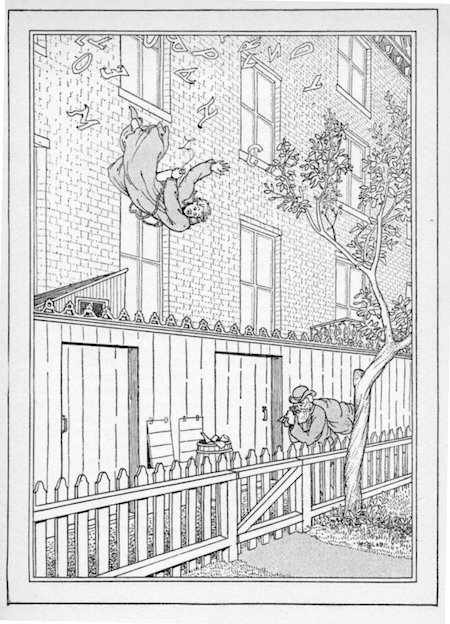Gelett Burgess’s story “The Man Who Lived Backward” (Blue Book Magazine, January 1946) uses anagrams in a way I haven’t seen before. The story is, as the title warns us, about a man who lived backward, aging into an infant. The man is named Levi Wicet, and we are informed that the men in the family are always named with anagrams of Levi: Viel, Ivel, Eliv, Ilev, Elvi, and, of course, Evil and Vile (the last two pronounced “Eveel” and “Veelay”). Burgess’s systematic enumeration omits one possibility, leaving it to the reader to figure out the anagram “Live Twice.”
Mr. Wicet’s peculiar condition was apparently due to a strange man (“I could imagine him playing the role of Mephistopheles in Faust“), known either as Dr. Santa or Elvid.
Once Burgess establishes the use of anagrams, he amuses himself by inventing names that mock the implausibility of his plot. Levi Wicet adopts a number of synonyms: Lei Felsa, Eli Busgo, and Eli Drauf. He marries a woman who takes the last name of Keaf. Our narrator hears the story from a gruff and sarcastic Hungarian named Dr. Kojer. We not only have an unreliable narrator, but one who boasts about it with recreational linguistics.
(Posted by Doug Skinner. The illustration is by Burgess, from his “helter-skelter rigamarole” from 1909, Lady Méchante.)


2 responses so far ↓
1 Norman Conquest // Sep 7, 2018 at 11:49 am
Must read!
2 Doug // Sep 10, 2018 at 10:02 am
Recommended!